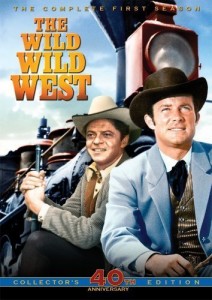[dropcap]I[/dropcap]n the 1960’s, as the American genre of the Western guttered in its final death throes, a new sort of Western birthed onto the scene replacing the Wild West with what has become known as the Weird West. Most prominently, the Weird West is defined by its landmark accomplishment, CBS Studio’s The Wild Wild West.
Aside: After my last post, it has come to my attention that several of you, my faithful readers, have begun to question the lucidity of my waking state (and whether mind-altering substances might be involved). But I assure you, the indelibility of my turpitude is purely natural (and more importantly, untransferable).
Unsurprisingly, considering the fact that CSI’s newest show will be based in Lake Wobegon (just kidding, it’s probably going to end up being Seattle) CBS has resorted to rebooting old favorites. This season they gave us the chance to feel the sun and surf course through our veins as we lip sync the gritty phrase, “Book ’em, Danno.” It appears that for the coming season, attempts will be made to revive The Wild Wild West, the poster child of all that is weird with westerns.
As a writer working on a Weird Western novel, this is great news for me. But what, you ask, makes a western weird over simply being wild? The Weird West is an alternate history based in the era of the American West. Alternate histories focus on yesterday’s tomorrows by incorporating outrageous inventions and technologies ahead of their time. Remember the giant steam driven spider from The Wild, Wild, West movie based on the TV show? That’s the Weird West.
A town of zombie gold miners living under a shaman’s curse, or hunting buffalo from an autogyro, those are Weird West. Although the genre may have been spurred to life by a desperate American public gripped by the specter of communism and longing to escape into a world of unfettered freedom and possibilities, today the Weird West has come to also represent a small group of dreamers enamored with the future as well as the past. These dreamers hope that by rediscovering the future available to us 100 years ago, we can find a path back to it.
All dreamy-headed naivete aside, with the growing popularity of alternate history sub-genres such as steampunk and dieselpunk (more on those later) this just may be the year of the weird West. So go weird, young man.
